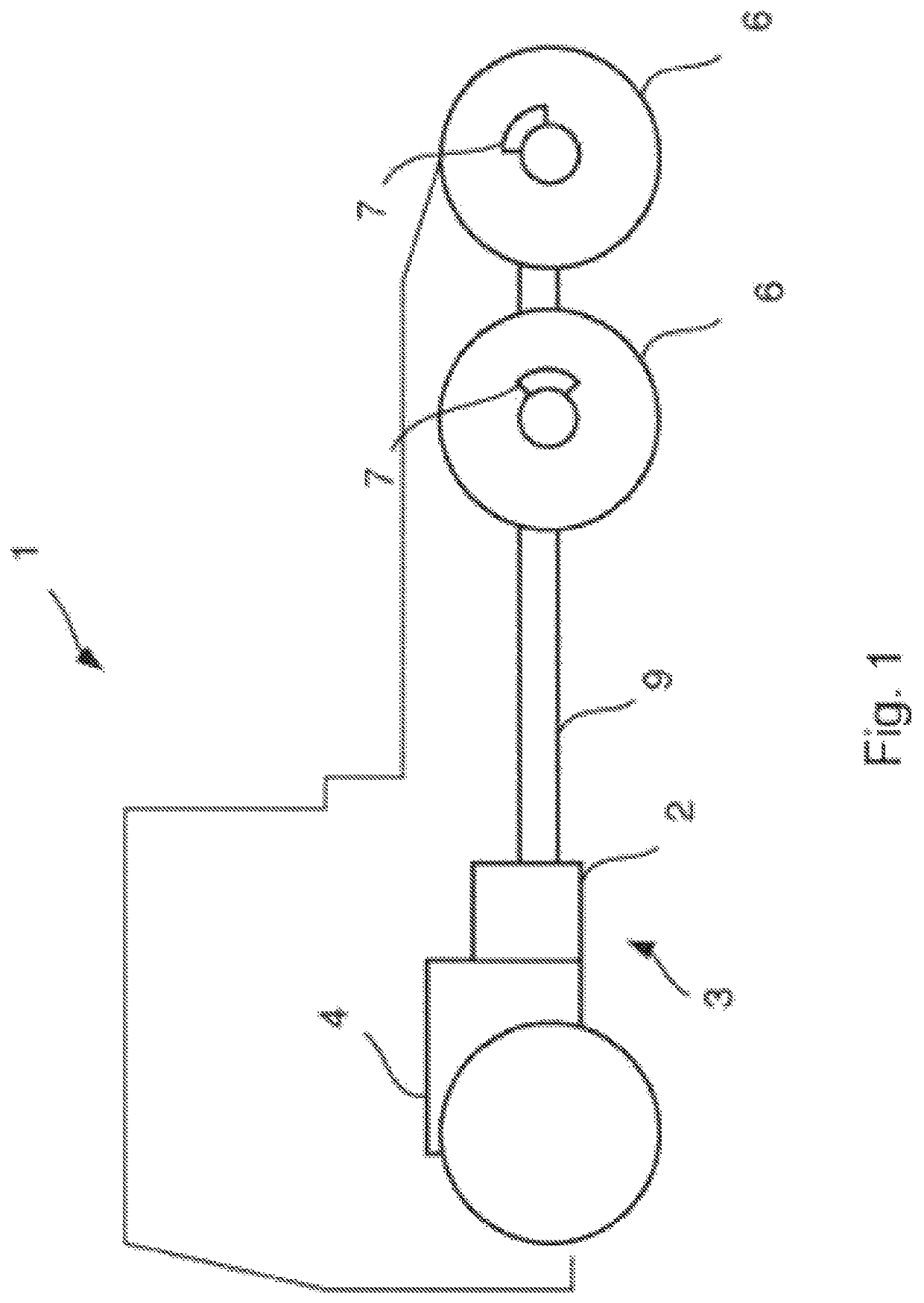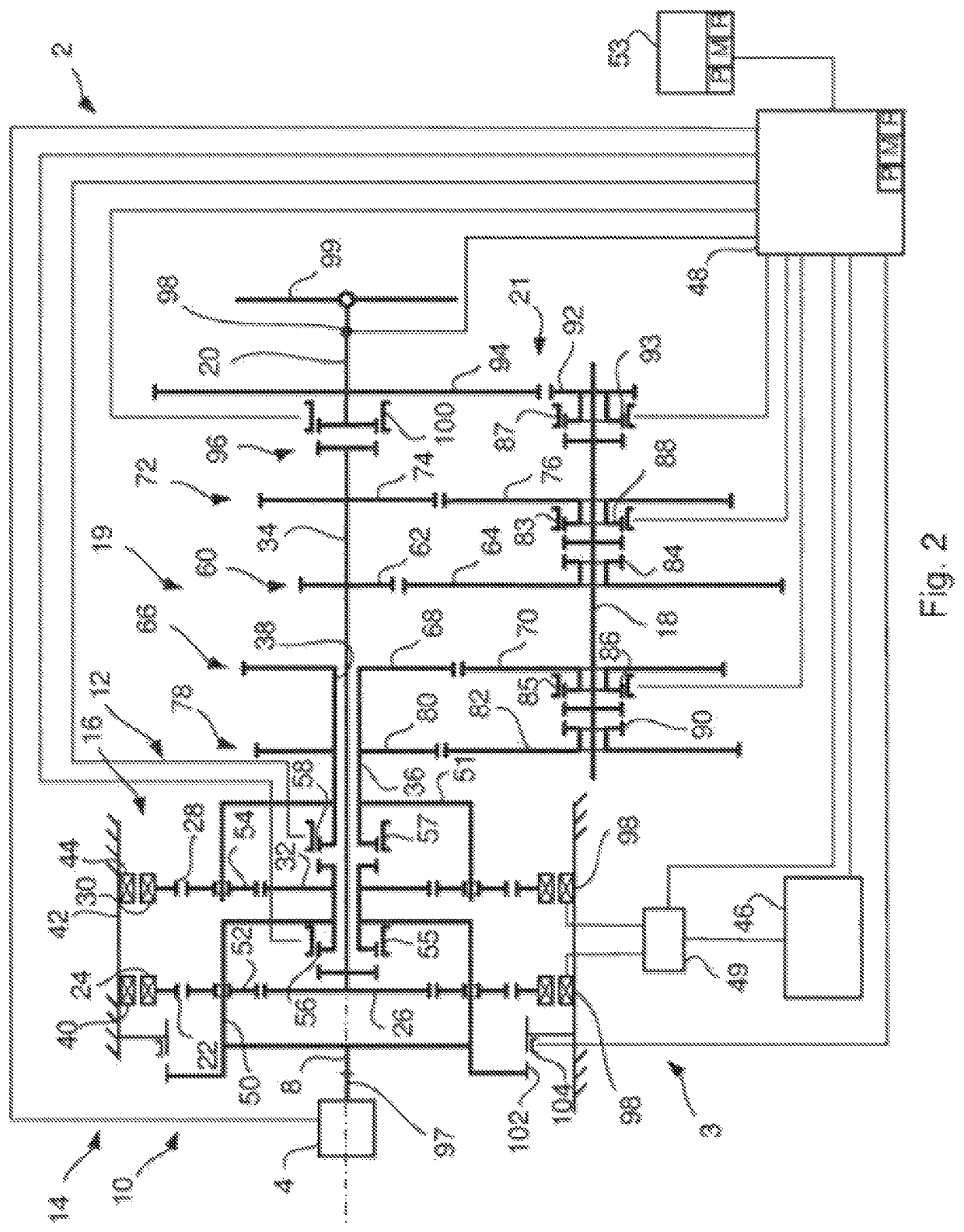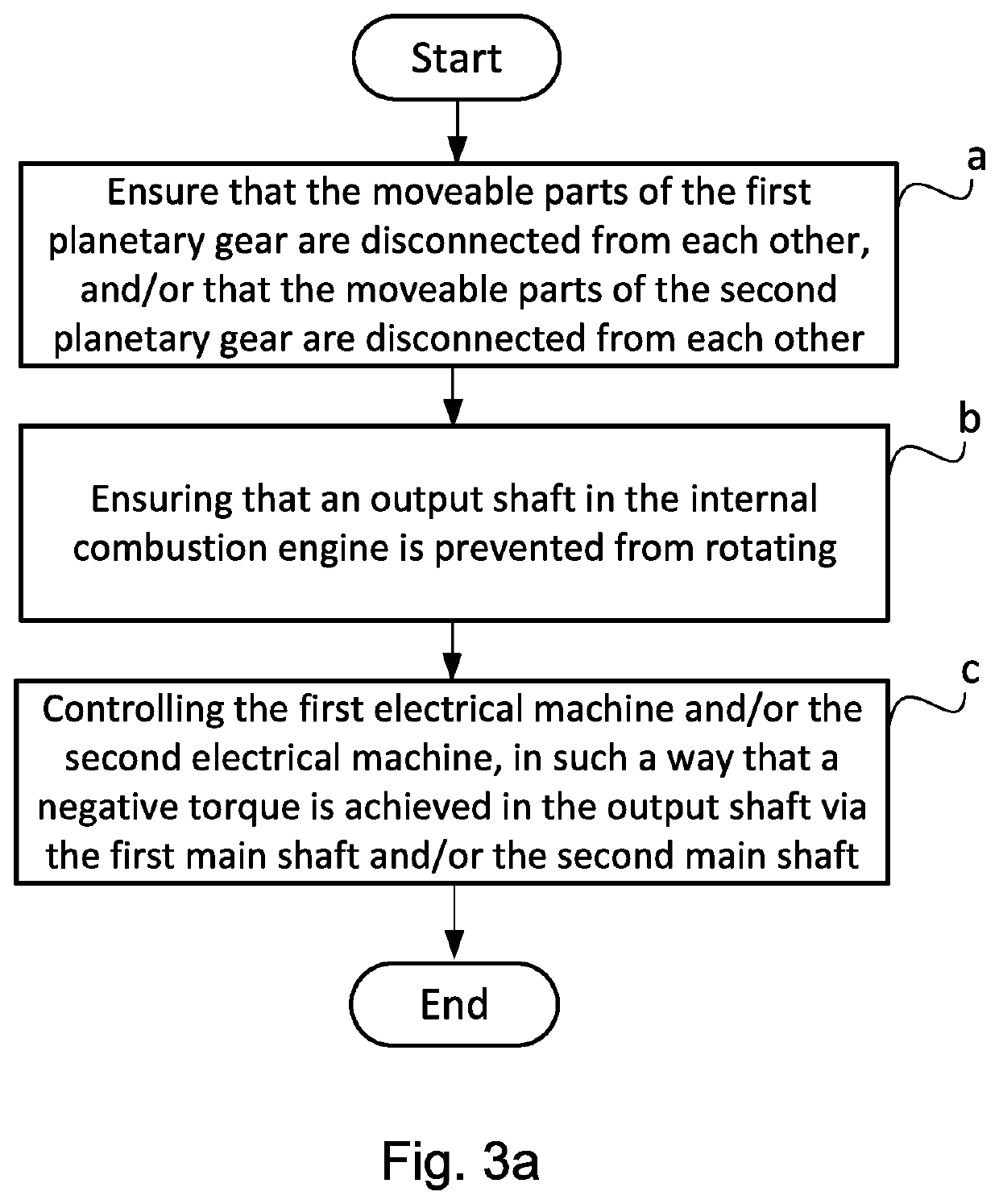Method to control a hybrid powertrain, vehicle comprising such a hybrid powertrain, computer program for controlling such a hybrid powertrain, and a computer program product comprising program code
a hybrid powertrain and hybrid technology, applied in the direction of electric propulsion mounting, electric machine mounting, transportation and packaging, etc., can solve the problems of electrical machine strength, wear of coupling discs, and inability to generate a sufficiently large reaction torque to the planetary gear, etc., to achieve low manufacturing cost, compact structure, and low weight
- Summary
- Abstract
- Description
- Claims
- Application Information
AI Technical Summary
Benefits of technology
Problems solved by technology
Method used
Image
Examples
Embodiment Construction
[0044]FIG. 1 shows a schematic side view of a vehicle 1, comprising a gearbox 2 and an internal combustion engine 4, which are comprised in a hybrid powertrain 3. The internal combustion engine 4 is connected to the gearbox 2, and the gearbox 2 is further connected to the driving wheels 6 of the vehicle 1 via a propeller shaft 9. The driving wheels 6 are equipped with brake devices 7 to brake the vehicle 1.
[0045]FIG. 2 shows a schematic side view of a hybrid powertrain 3 with a gearbox 2, comprising an input shaft 8, a first and a second planetary gear 10 and 12, respectively, a first and a second electrical machine 14 and 16, respectively, a countershaft 18 and an output shaft 20. The hybrid powertrain 3 comprises an internal combustion engine 4 connected to the gearbox 2. The internal combustion engine 4 is connected with the gearbox 2 via the input shaft 8 of the gearbox. The internal combustion engine has an output shaft 97. The output shaft 97 of the internal combustion engine ...
PUM
 Login to View More
Login to View More Abstract
Description
Claims
Application Information
 Login to View More
Login to View More - R&D
- Intellectual Property
- Life Sciences
- Materials
- Tech Scout
- Unparalleled Data Quality
- Higher Quality Content
- 60% Fewer Hallucinations
Browse by: Latest US Patents, China's latest patents, Technical Efficacy Thesaurus, Application Domain, Technology Topic, Popular Technical Reports.
© 2025 PatSnap. All rights reserved.Legal|Privacy policy|Modern Slavery Act Transparency Statement|Sitemap|About US| Contact US: help@patsnap.com



